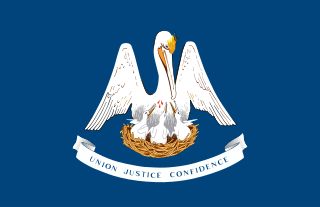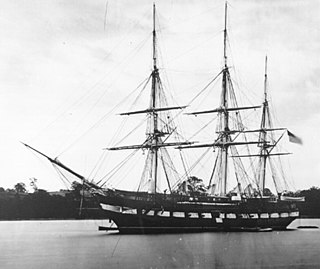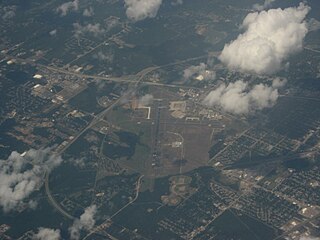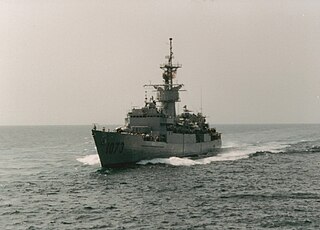Two ships of the United States Navy have been named for the city of Shreveport, Louisiana.

The United States Navy (USN) is the naval warfare service branch of the United States Armed Forces and one of the seven uniformed services of the United States. It is the largest and most capable navy in the world and it has been estimated that in terms of tonnage of its active battle fleet alone, it is larger than the next 13 navies combined, which includes 11 U.S. allies or partner nations. with the highest combined battle fleet tonnage and the world's largest aircraft carrier fleet, with eleven in service, and two new carriers under construction. With 319,421 personnel on active duty and 99,616 in the Ready Reserve, the Navy is the third largest of the service branches. It has 282 deployable combat vessels and more than 3,700 operational aircraft as of March 2018, making it the second-largest air force in the world, after the United States Air Force.

Shreveport is a city in the U.S. state of Louisiana. It is the most populous city in the Shreveport-Bossier City metropolitan area. Shreveport ranks third in population in Louisiana after New Orleans and Baton Rouge and 126th in the U.S. The bulk of Shreveport is in Caddo Parish, of which it is the parish seat. Shreveport extends along the west bank of the Red River into neighboring Bossier Parish. Shreveport and Bossier City are separated by the Red River. The population of Shreveport was 199,311 as of the 2010 U.S. Census. The United States Census Bureau's 2017 estimate for the city's population decreased to 192,036.

Louisiana is a state in the Deep South region of the South Central United States. It is the 31st most extensive and the 25th most populous of the 50 United States. Louisiana is bordered by the state of Texas to the west, Arkansas to the north, Mississippi to the east, and the Gulf of Mexico to the south. A large part of its eastern boundary is demarcated by the Mississippi River. Louisiana is the only U.S. state with political subdivisions termed parishes, which are equivalent to counties. The state's capital is Baton Rouge, and its largest city is New Orleans.
- The first USS Shreveport (PF-23) was a Tacoma-class frigate, which served in the 1940s.
- The second USS Shreveport (LPD-12) was a Cleveland-class amphibious transport dock, which served from 1970 to 2007.
The first USS Shreveport (PG-131/PF-23) was a Tacoma-class frigate of the United States Navy.

The Tacoma class of patrol frigates served in the United States Navy during World War II and the Korean War. Originally classified as a gunboat (PG), they were reclassified as a patrol frigate (PF) on 15 April 1943. The class is named for its lead ship, Tacoma, a Maritime Commission (MARCOM) S2-S2-AQ1 design, which in turn was named for the city of Tacoma, Washington. Twenty-one ships were transferred to the British Royal Navy, in which they were known as Colony-class frigates, and twenty-eight ships were transferred under Lend-Lease to the Soviet Navy, where they were designated as a storozhevoi korabl, during World War II. All Tacoma-class ships in US service during World War II were manned by United States Coast Guard crews. Tacoma-class ships were transferred to the United States Coast Guard and various navies post-World War II.

A frigate is a type of warship, having various sizes and roles over the last few centuries.
| This article includes a list of ships with the same or similar names. If an internal link for a specific ship led you here, you may wish to change the link to point directly to the intended ship article, if one exists. |













